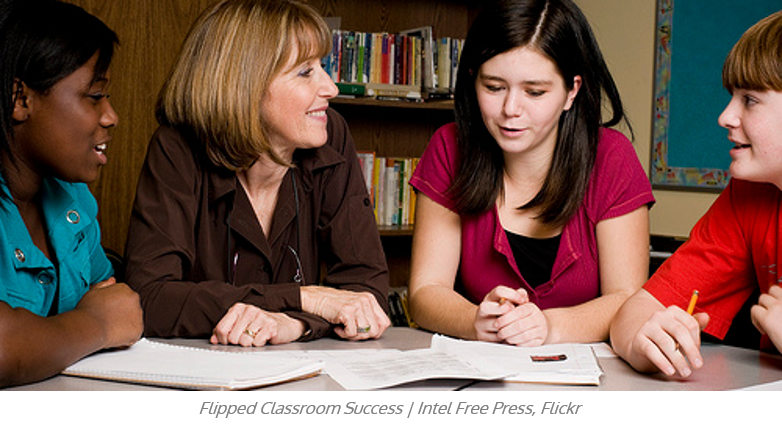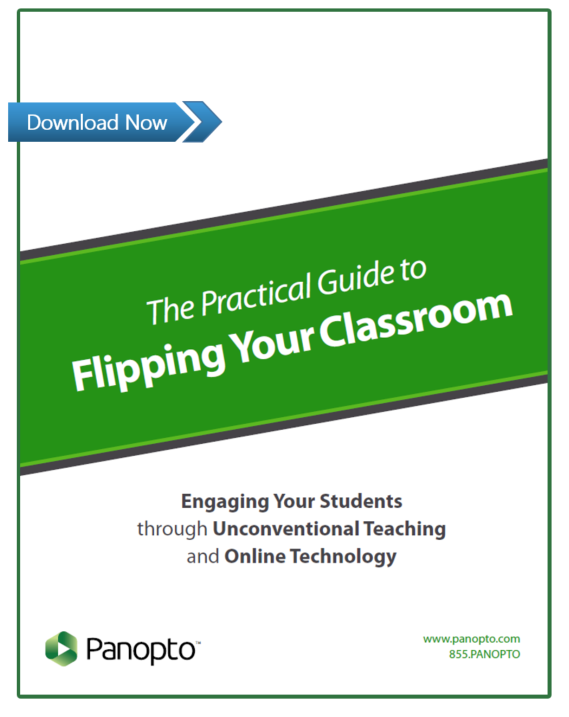- Academic Technology
Assessing the Success of Your Flipped Classroom And Planning for Next Year

As with any new teaching model, a switch to the flipped classroom will generate a healthy amount of interest and excitement. At the end of each semester, instructors will have a wealth of new data, opinions, and ideas with which to move from a first-flip pilot to full-time flipping — and perhaps even to an institution-wide deployment.
As you complete your first year, plan to take some time to evaluate how the pilot impacted the tone and tenor of your class’s regular sessions, the final marks your students earned, and how the whole new process worked for you as an instructor.
Evaluate your flipped classroom’s impact on student performance
For most, the deciding measure of the success of a flipped classroom (or any new methodology) is its impact on students’ grades. In study after study, the flipped classroom has been a resounding success when it comes to exam grades, but each instructor and school will want to determine what success looks like to them. That will require digging into some data.
Of course, final course and exam grades are simple metrics for measuring student success, but without anything to compare them to, it can be difficult to tell whether the new pedagogy or some other factor was responsible for a change.
To get a better picture, check how student grades track over the course of the year. As students gain familiarity with the system and better understand what is expected of them, they will exhibit more confidence, engage more enthusiastically in the active learning component, and learn to unlock the resources at their fingertips.
Comparing weekly metrics, like video consumption, online checks for understanding, or participation in class against performance on exams can help instructors understand how students adjust their behavior after a few exams.
For instructors who teach multiple sections of the same class in a given semester, consider using one class as a control and in another try out the flipped classroom. Since the content will be roughly the same, it is an opportunity to do a side-by-side comparison to generate a tighter feedback loop for your classroom and your department.
Gather student and parent feedback on the flipped classroom

Grades may give instructors quantitative data on student performance, but don’t be too quick to judge a new teaching style’s success based solely on a letter. Student evaluations are likely to offer instructors insights that analytics never would.
Especially in the early goings, it’s a good idea to use a few minutes of class time to interact with students on a two-way basis, searching out potential lingering concerns and challenges with the flipped classroom format. With a little understanding, you can help to remedy any issues long before it comes time to complete report cards.
In the K12 setting, parents will also likely be eager to express their opinions about the flipped classroom. For the most engaged parents, the flipped classroom will have provided them a new level of connection to their student’s learning. Parents will either find themselves receiving fewer requests for help with assignments (since they were completed during class time), or that their ability to review the pre-class lectures gave them a much-needed refresher on how to help their child.
Assess the performance of your flipped classroom with a mix of qualitative and quantitative indicators. And don’t forget, once you’ve made your evaluation, share your findings! If you are one of those educators leading the way, there will be others who want to follow. Joining the larger community of flipped educators can be an exciting moment.
When it comes to flipping a classroom, you can play a major role in shaping student, parent and administrator perceptions about this new approach to learning. By being proactive in your communications, planning for implementation needs, listening to feedback, reviewing the analytics, and continually improving the process, you can make the most of the school year, and more importantly, make a real difference in your students’ learning.
Learn More About Flipping Your Classroom
 While every flipped classroom is a little bit different, the goal is always the same: interactive, student-centered learning. To achieve that, flipped classroom time can take many forms, including small group labs, discussions, and problem-solving time, further exploration of the lesson as a group, students presenting and receiving feedback from their peers, or simply time given to complete individual assignments with an opportunity to work more closely with the teacher.
While every flipped classroom is a little bit different, the goal is always the same: interactive, student-centered learning. To achieve that, flipped classroom time can take many forms, including small group labs, discussions, and problem-solving time, further exploration of the lesson as a group, students presenting and receiving feedback from their peers, or simply time given to complete individual assignments with an opportunity to work more closely with the teacher.
Interested in joining teachers from around the country at the forefront of the flipped classroom pedagogy? We’ve prepared a comprehensive guide to preparing, delivering, and evaluating your flipped classroom, from ideas for interactive classroom activities to the tech needed to produce recorded lessons. Download your free copy today.



